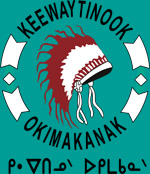Keewaytinook Okimakanak (KO) and its partner First Nations have witnessed incredible changes since the introduction of the e-community economic and social development model now being endorsed by the Assembly of First Nations (AFN) and Aboriginal Affairs and Northern Development Canada. “We were able to get access to the Internet in several First Nations before (we had) telephones,” says Geordi Kakepetum, KO’s chairman.
Two KO communities did not have telephone service before the Kuh-ke-nah Network (KO K-Net) began operations in 1994, but they soon began using the Internet as their main means of communications.
“The chiefs of Keewaytinook Okimakanak and the First Nations are leaders in developing and using a number of e-community initiatives,” Kakepetum says. “These broadband applications are recognized as essential tools in supporting locally owned and controlled economic and social opportunities.”
Lac Seul First Nation’s new elementary school, for example, has all the bells and whistles of modern school technology, including notebook computers, a computer classroom and SMART Boards – digital whiteboards with touch screen capability.
“There is a lab of 20 computers in our school so the students can have a computer classroom and do their research for various projects,” says Jennifer Manitowabi, principal of the Obishikokaang Elementary School, in a media.knet video. “We have another lab of notebooks so the students can use the Internet on a wireless system (and) they can use wireless textbooks with those notebooks.”
KO K-Net and partners are working with First Nation communities across the country to develop e-community strategies addressing local needs and priorities. This work is supported by an AFN initiative to encourage the construction of adequate broadband infrastructure as part of a broader plan for economic, social and cultural change based on knowledge and information.
Brian Beaton, coordinator of KO K-Net, stresses that e-health, e-learning, e-business and e-work development opportunities are required in every community to address ongoing professional, individual, family and community needs. “These e-applications are forever evolving and adding new and enhanced opportunities,” Beaton says. “(This) provides choices for local community members to remain in their communities and contribute to the growth and positive development in these challenging environments.”
Beaton says local development in any remote and rural environment with fibreoptic communication infrastructure can now be properly supported to provide local jobs and capacity development. “As I travel to the First Nations with the different projects and programs we support, I witness many opportunities in each community,” Beaton says. “The work that is happening and that needs to happen is in each First Nation. We definitely need to get out of the mindset that this work needs to be delivered by some regional organization or institution located in some far away city. The work is local and needs to address local needs and priorities.” Kakepetum invites everyone to visit the KO e-community booth at the upcoming AFN Assembly in Toronto in July.
— Rick Garrick



